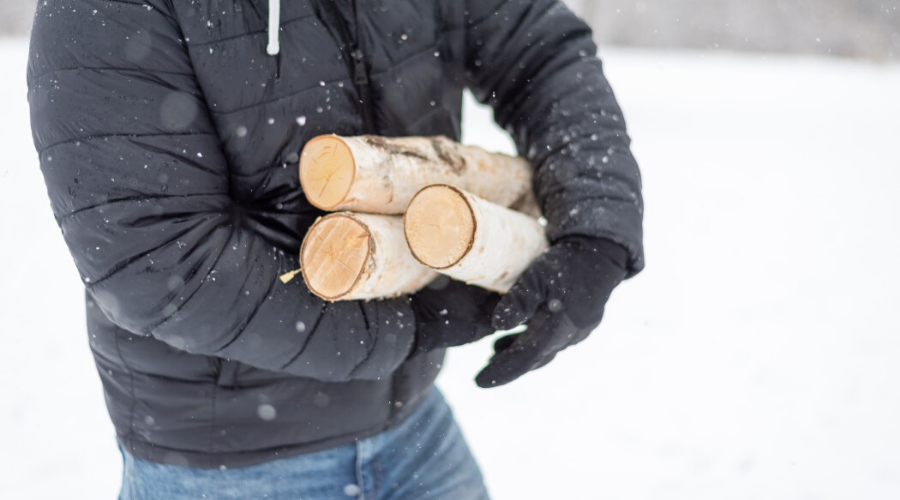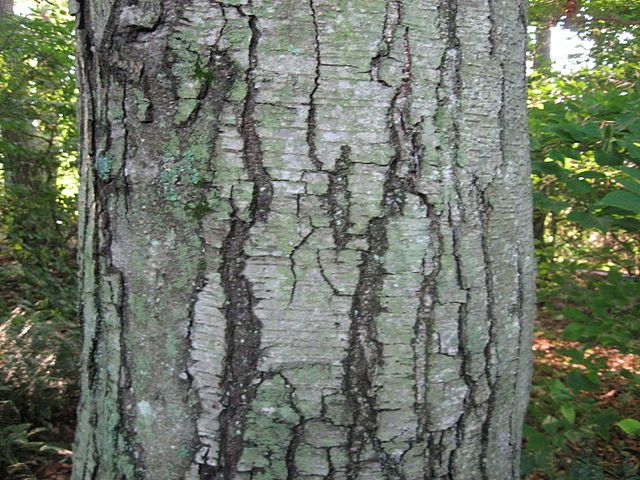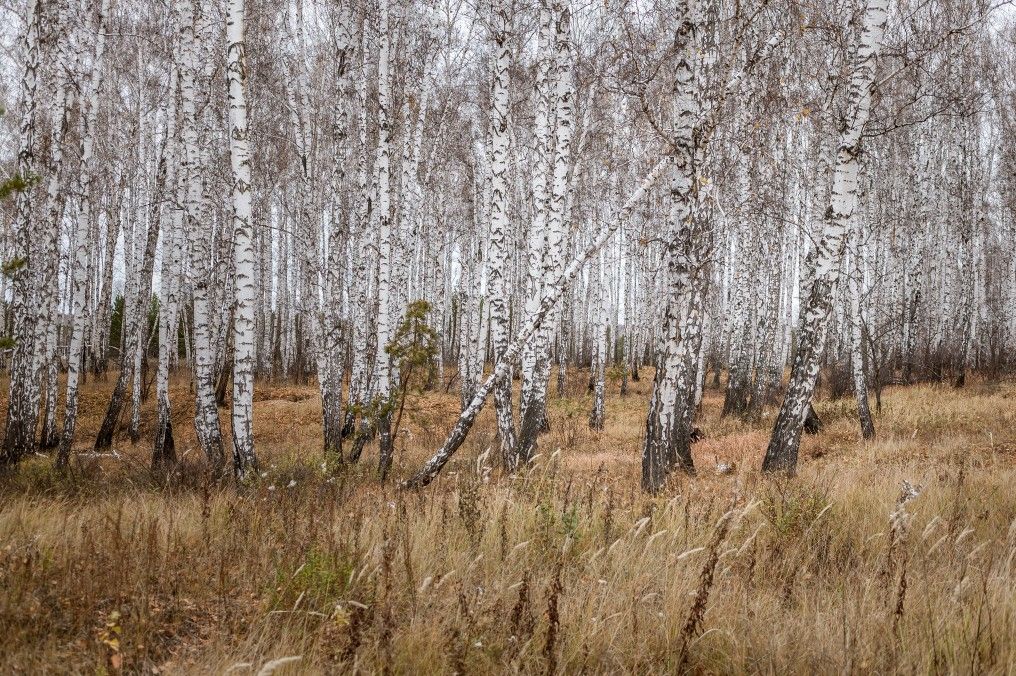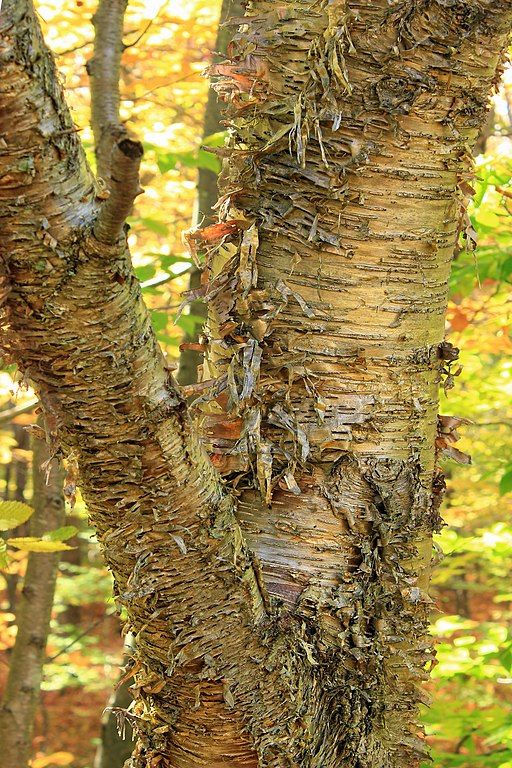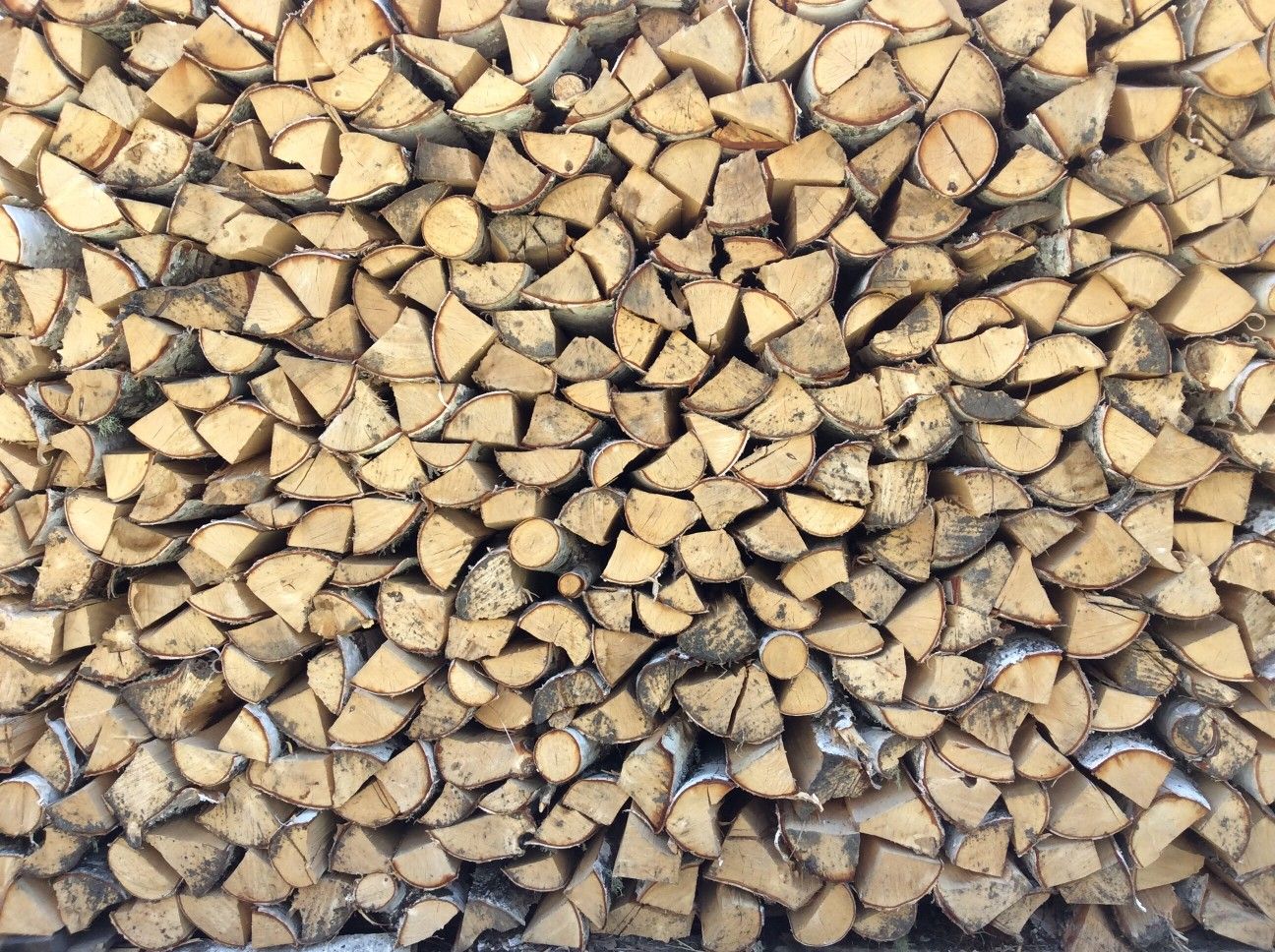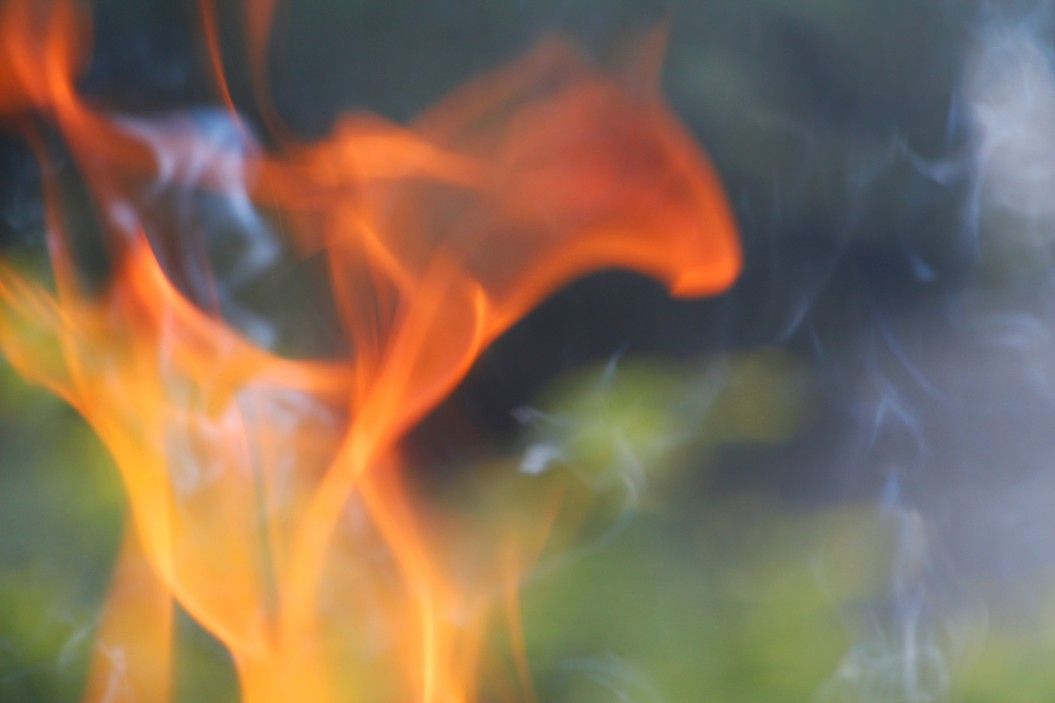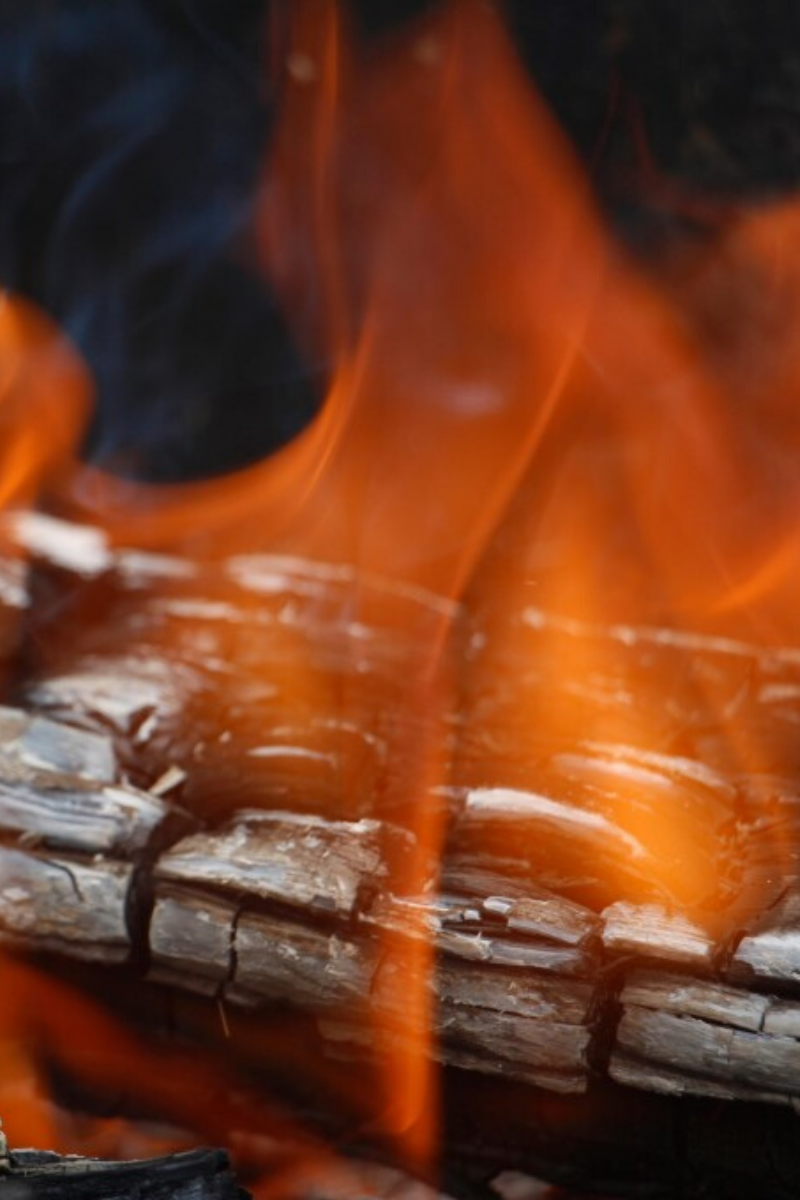Birch is a popular firewood option in the United States for everything from cooking to campfires to hearth heating homes. Whether you’re new to burning wood for heat or just curious about the properties of Birch, this is the guide for you. From heat output, scent, smoke, seasoning time, and the best uses for each variety, this guide has everything you need to know about Birch firewood.
Birch Firewood Details
BTU: 20.8
Weight: 4312 green, 2992 dry
Seasoning Time: approximately 1 year if properly stacked and covered
Resin / Sap Content: roughly 8 percent moisture content when seasoned
Splitting Difficulty: medium
Smoke: medium
Smell: slight
Varieties of Birch Firewood
Birchwood usually burns steadily at 250 to 300 degrees. Also, Birchwood turns into coals quickly and retains heat. Birch firewood is known for burning quickly, sometimes as fast as 60 minutes. Sometimes a little oak or elm wood can be added to help birch wood burn longer.
However, if you use the right kinds of birch wood, that won’t be a problem.
A picture of the bark of Betula lenta, black birch. Credit: Wikimedia Commons
Black Birch
Black birch wood is probably the best species in the Birchwood family that you can use for firewood. The wood of the black birch tree is extremely dense and fibrous. These qualities mean that black birch wood burns hotter and longer than other species.
Black birch is also known as cherry birch, sweet birch, and mountain mahogany. This wood also has a unique and sweet smell as it burns. If you cut down your own black birch trees, just remember to cut them up. split them into triangular planks and stack them into air-drying cords as soon as possible.
Birch trees contain a lot of sap and moisture because of their tightly encompassing bark. So, they can take longer to season.
Black Birch Details
- Weight Green: 4630 – 5960 lbs
- Weight Dry: 2840 – 3650 lbs
- BTUs: 26.8 million
- Splitting Ease: Medium
- Smoke: Medium
- Fragrance: Good
- Burn Time: Excellent
White Birch
The bark of the white birch tree is very durable and waterproof. In fact, the bark of the white birch tree is used in the manufacture of canoes, bowls, and other items.
Because white birch bark is so strong, the inner bark of the tree is not as strong or dense relative to black birch or even yellow birch. White birch burns fairly, but you may need to use more or add a little oak or elm.
White birch is also known as paper birch because its strong bark is thin, white, and features distinctive horizontal dark stripes.
White birch, like other birch trees, retains a lot of sap and moisture. Make sure you cut them into small, plank-like pieces and give them a lot of time to season properly.
White Birch Details:
- Weight Green: 3724 lbs
- Weight Dry: 2979 lbs
- BTUs: 20.2 million
- Splitting Ease: Medium
- Smoke: Medium
- Fragrance: Good
- Burn Time: Fair
Yellow Birch
Yellow birch (Betula alleghaniensis) with peeling bark along the Frank Gantz Trail, Monroe County, within Gouldsboro State Park. Credit: Wikimedia Commons
Yellow birch wood is also known as swamp birch. If you can’t get your hands on any black birch wood, try to get yellow birch before you settle for white birch. Yellow birch wood bark has a distinctive silver-yellowish hue. When burned, yellow birch wood gives off a pleasant wintergreen smell. The inner bark of yellow birch wood is extremely dense, hard, and durable. Yellow birch wood is used by a lot of manufacturers to make furniture.
As explained before, birchwood species have high moisture and sap content. It’s important to cut it into thin planks and expose its surfaces to the air to let it season properly.
Yellow Birch Details:
- Weight Green: 4291 lbs
- Weight Dry: 3489 lbs
- BTUs: 23.6 million
- Splitting Ease: Difficult
- Smoke: Medium
- Fragrance: Good
- Burn Time: Excellent
BTU of Birchwood
A BTU is a unit of measurement relative to incremental and quantitative increases in thermal energy.
It is also an acronym. “BTU,” stands for, “British Thermal Unit.” Developed in the 1800s, a BTU refers to how much thermal energy is needed to increase the ambient temperature of a pound of water by 1 degree.
BTUs are used to measure the thermal heat output of firewood, but it is also used to gauge the energy output of air conditioners and heating units.
Seasoning Time for Birch
Seasoning refers to the air-drying dehydration process of drying wood. When you cut down a tree, the inner bark could be moist, full of sap, and sometimes even green colored.
A piece of firewood can only be considered seasoned when it loses it green color and has less than 20% moisture content.
If you try to burn green wood, you will only burn 50% to 60% of its inherent fuel value because it is so moist with sap and/or water. You will waste more thermal energy evaporating sap and water in the wood than creating ambient heat energy.
To optimize seasoning and preferred moisture content, cut the wood into slender planks and stack them into a cord. You must allow freshly chopped wood to air dry in the elements for at least a year before it can be seasoned.
Looking for a firewood rack so that you can season your own firewood this year? You may find our reviews of the best firewood racks of 2020 helpful in your search.
Resin / Sap Content in Birch Firewood
Relative to other types of firewood, birchwood doesn’t have a lot of sap. But, it does have enough moisture content to require lengthy seasoning of up to a solid year or more.
You can expect a final moisture content of around 8-percent with properly seasoned Birch firewood. Well under the 20-percent moisture content, or less, recommended for optimally burnable firewood.
Smoke
Like many other popular types of firewood used for home-heating, Birch burns easily once seasoned and puts out little to medium levels of smoke.
With a properly vented wood stove or fireplace, Birch smoke is easily dissipated. Green Birch on the other hand, if burned indoors, could fill your entire home with harmful smoke and fumes.
Smell
Birchwood burns easy when seasoned and gives off a pleasant, if not only slightly scented, smelling smoke. Most species of Birchwood smell particularly sweet or give off a wintergreen type of aroma most often found in pine and evergreen wood.
Common Questions:
Is it Bad to Burn Unseasoned Birch Firewood?
Unseasoned green wood has a high moisture and sap content. When you burn green wood, you are mostly just evaporating the moisture content within, not creating warming thermal energy. Burning green wood is a bad idea too because it can create a latent and spontaneous fire hazard.
Creosote is an accumulation of unburned word particles that cling to smoke when you burn greenwood. As green wood burns, creosote coats the chimney walls as the smoke rises. Creosote can spontaneously reignite and cause a chimney fire. Remember to season your wood for a year or more.
How Do You Prevent Wood Rot While Seasoning Birch?
Chop your Birch into slender planks to maximize the seasoning process. Arrange the wood into a cord so that air flows through them. Don’t just dump your freshly cut firewood onto the ground. It can get rained on from above and become soggy and rotted from the bottom.
Place your cord in a dry area with a concrete bottom or in a shed. You may even have to build or buy a platform to stack and store your wood so it doesn’t touch the ground. Use a cover or tarp to cover your wood when needed.
Check on the status of your seasoning Birch regularly. Some species of wood can take over two years to season. Don’t just stack your wood in a cord and then forget it for a year or two.
Can You Season Birch Before Cutting it?
No, but you can pre-season it if you have access to the freshly cut trees. If you cut down a tree with a full bloom of leaves, cut it into two or three sections and then rest it somewhere to dry. Proceed to cut it when the leaves become brittle and crisp to the touch. The leaves and branches will siphon and draw out a lot of moisture content in a pre-seasoning process.

